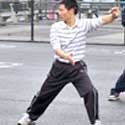Are Chinese people around the world all working toward China’s world domination? Do ethnic Chinese living in Toronto, Hong Kong and New York act in concert with China’s government? Are Chinese “returnees” really the ones driving China’s IT sector?
These are some of the questions that leapt to my mind when I read author Joel Kotkin’s Forbes article, “Inside the Sinosphere: China’s New ‘Diaspora’ Economy.” The piece sounds the alarm against a seemingly Borg-like race: The Chinese are coming! There’s something called a Chinese diaspora! And they’re gonna control the global economy—and hand that control over to China!
Here’s my rebuttal, which was published in China Beat:
China’s rapid rise has long been heralded, but now that the country is economically leaving industrialized nations in its wake, many are trying to make sense of its success. A recent Forbes article, “Inside the Sinosphere: China’s New ‘Diaspora’ Economy” by columnist Joel Kotkin, depicts a monolithic “Sinosphere,” or ethnic Chinese sphere of influence, that relies on the overseas Chinese for funding and technological leadership. Not only is this view simplistic and misguided, but it is also stokes atavistic fears of a “yellow peril.”
Kotkin, who co-authored the piece with Hee Juat Sim of the Civil Service College of Singapore, attempts to link together several unrelated points, but I will focus only on the concept of the Sinosphere and the role that ethnic Chinese people outside of China play in China’s rise.
There are indeed ethnic Chinese people in practically every corner of the world, but this doesn’t mean there is a singular Sinosphere to speak of. Kotkin has lumped PRC nationals with Hong Kongers, Singaporeans, Taiwanese, Chinese-Americans, Chinese-Australians, and so on. He even calls Hong Kongers and Taiwanese “expatriates” from China.
In just a few sentences, Kotkin traces the growth of this Sinosphere from Zheng He, the Chinese admiral who led voyages as far as East Africa, to what he calls the “diasporic colonies” to, finally, the successful Chinese immigrants in the U.S., Canada and Australia. Kotkin conflates more than 600 years of Chinese immigration to disparate destinations and suggests, wrongly, that ethnic Chinese the world over share an agenda with the Middle Kingdom.
Today the Chinese diaspora includes tens of millions of ethnic Chinese living outside of China, Hong Kong and Taiwan. But they and their forefathers did not leave China—whether recently or centuries before—in order to expand Chinese state power. (In addition, the Chinese who settled in Southeast Asia were immigrants, and not, as Kotkin suggests, Chinese colonials.)
Like many immigrants, the vast majority of the Chinese diaspora ventured beyond China’s borders for personal reasons, usually because they were poor and economic opportunities elsewhere held greater promise, or because they longed to escape a chaotic, poor, or war-torn China. Even though many in the diaspora have maintained aspects of the Chinese language and culture, it is dangerous to equate ethnicity with nationality or allegiance. As much as Kotkin, the author of Tribes: How Race, Religion, and Identity Determine Success in the New Global Economy, prefers to view the global economy in terms of ethnic groups—the Jews, the Chinese, the Japanese, etc.—the Chinese “tribe” is one that consists of different factions.
Kotkin makes the valid point that investments from Hong Kong and Taiwan helped launch China’s manufacturing engine in the 1980s, and are helping to propel China’s economy forward today. But he mistakenly assumes these investments are driven by a desire to expand the sphere of Chinese influence, and that China relies on these Chinese “expatriates” to expand its economy.
Hong Kong and Taiwan have injected cash into China because they hoped to access the domestic Chinese market and, until a few years ago, benefited from lower tax rates—not because they shared an agenda with Beijing and worked toward an ethnic Chinese domination of the global economy. Hong Kong and Taiwan had many reasons for investing more capital in China (and earlier, too) than Western nations, chief of which were that they were next-door neighbors, foresaw huge market opportunities, and could easily do business in China because of a shared language and culture.
Kotkin highlights the fact that Hong Kong and Singapore have increased their investments in China, as if this is evidence of a collusive Sinosphere. But is the increase at all surprising, given that China has been the top destination for global foreign direct investment since 2002? Throughout Asia, countries are playing up their connection to China in order to access the Chinese market—just look at the revival of Mandarin in Indonesia, or at Kevin Rudd, the Chinese-speaking former prime minister of Australia.
China’s economy would likely continue to gallop ahead even without investments from Hong Kong or Taiwan. It is not, as Kotkin suggests, that China relies on Hong Kong, Taiwan and Singapore for capital or technological leadership. Rather, these are the economies that have managed to benefit the most from China’s rise.




